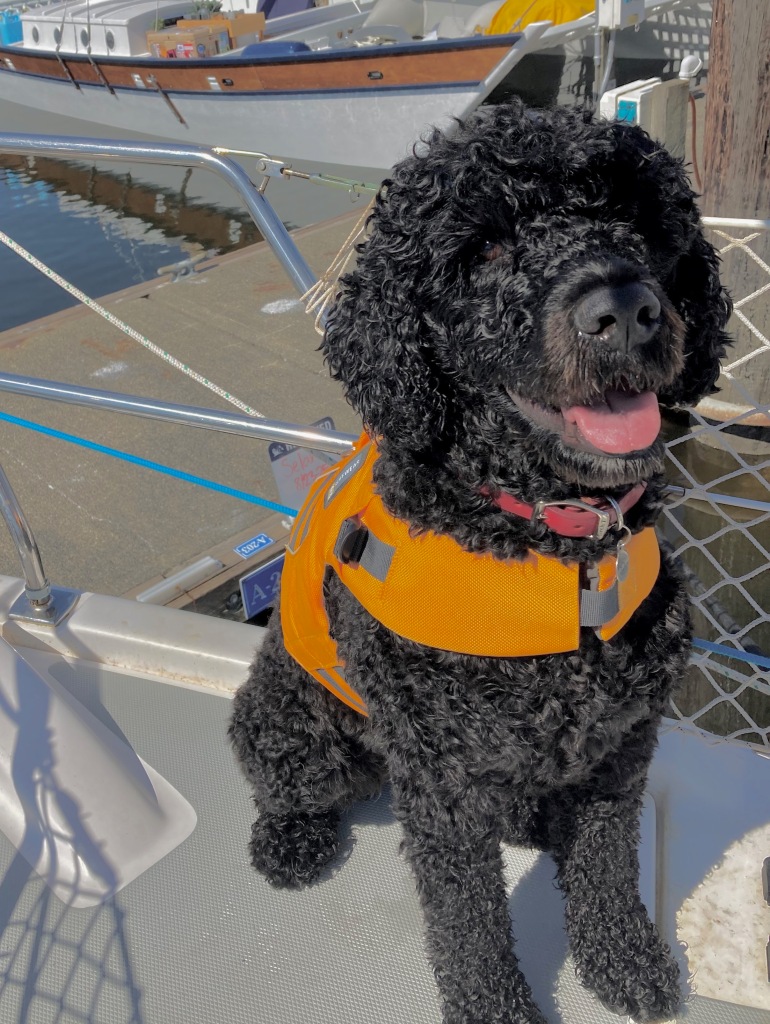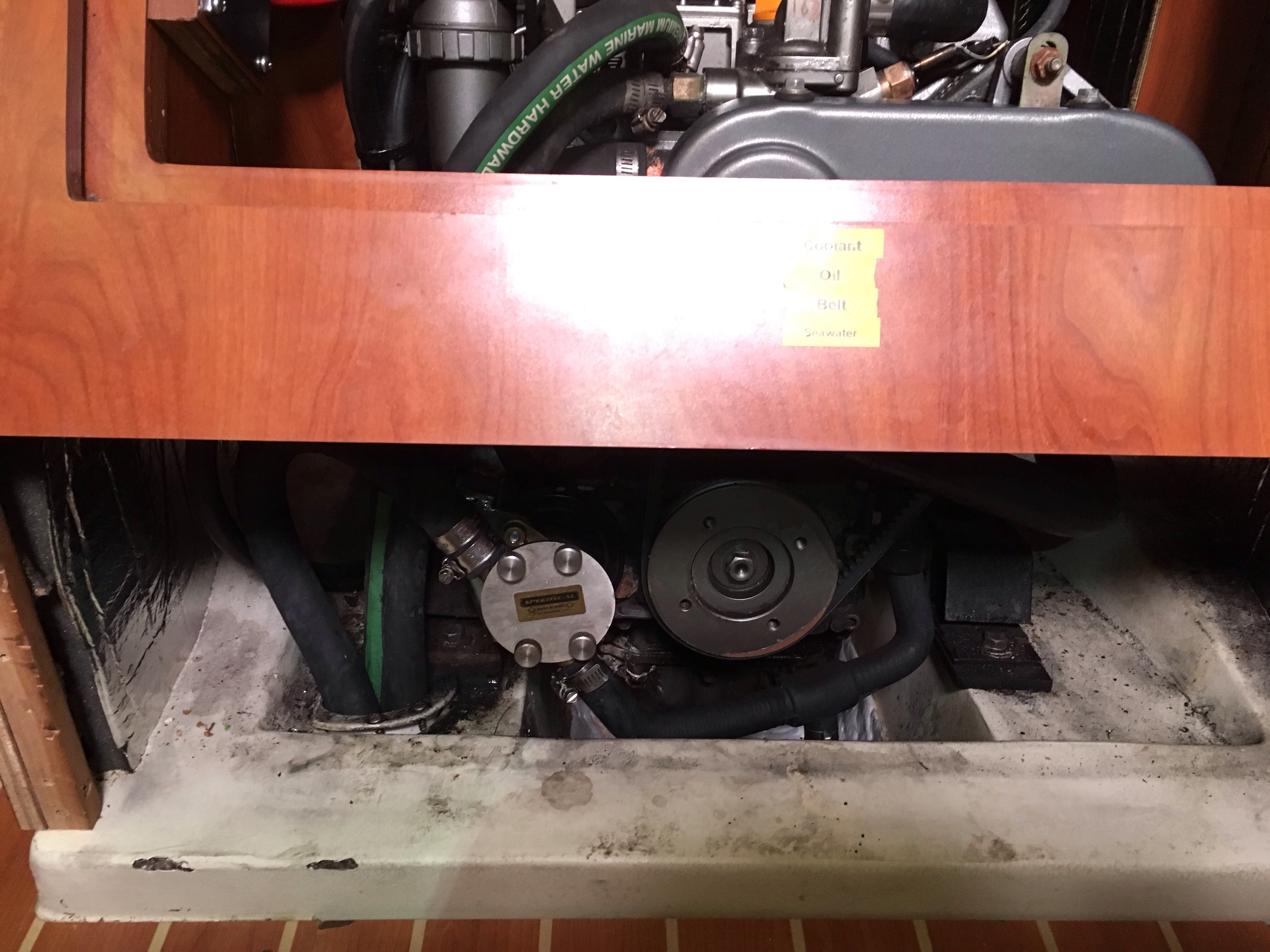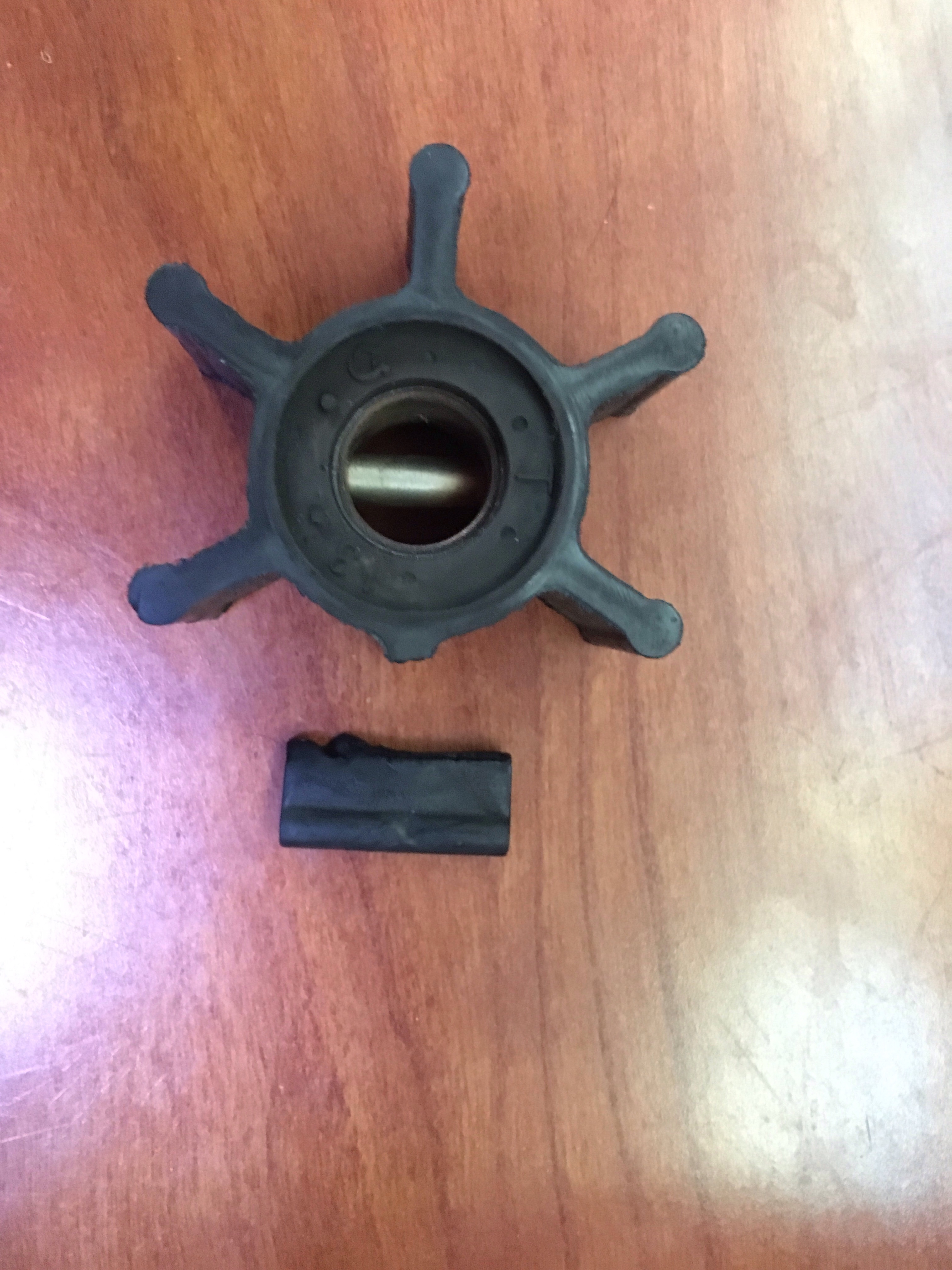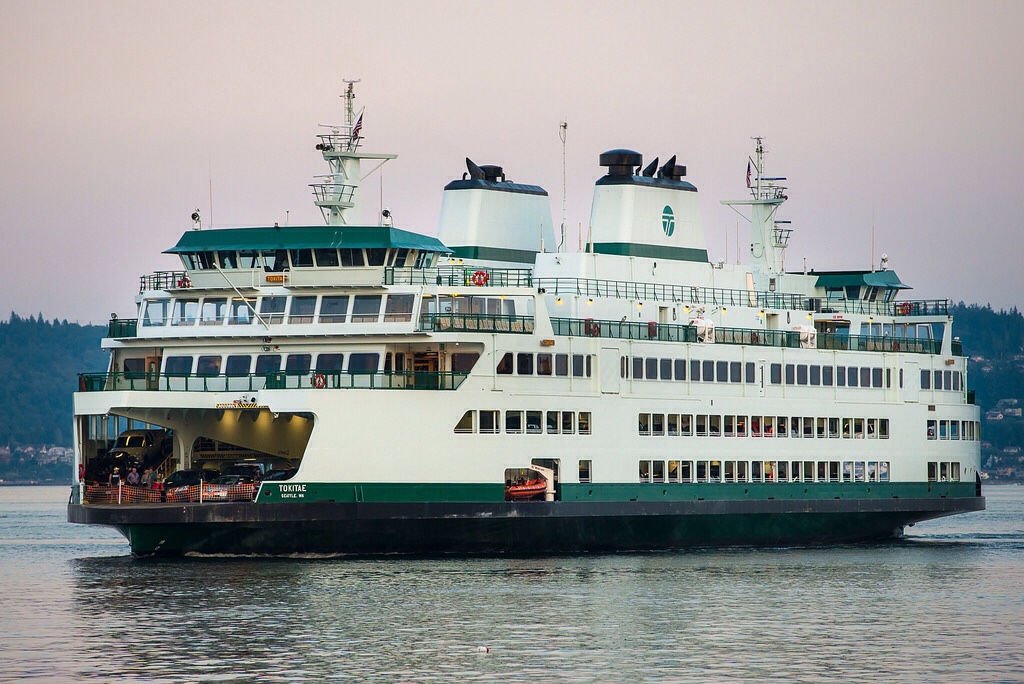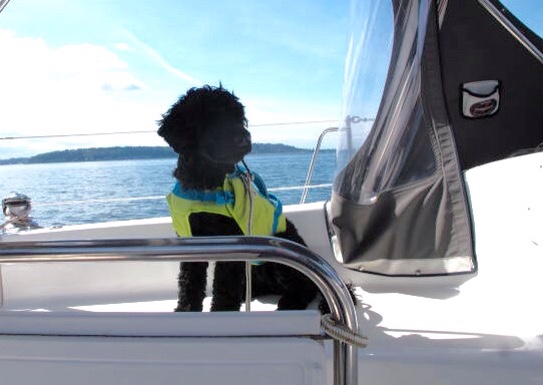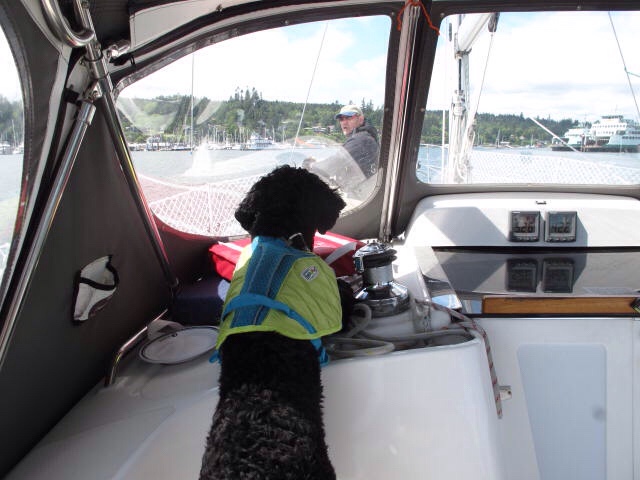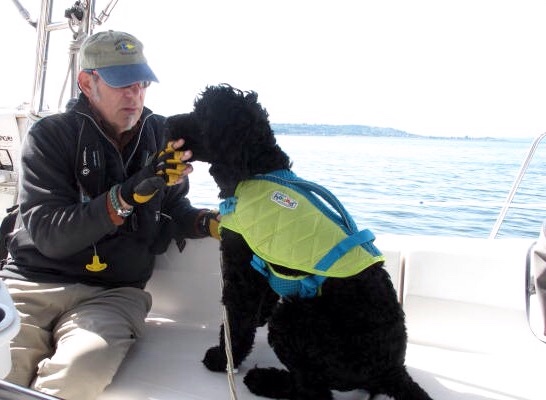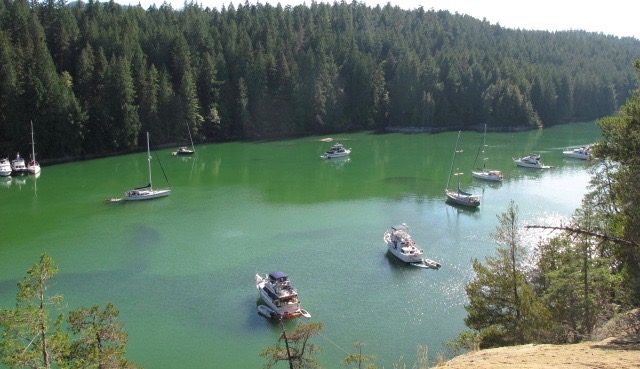We’re playing Covid Catch-up these days, making and taking those in-person appointments with friends and medical professionals (dentists, doctors, opticians) that we put off during the one-year rage of the pandemic.
That, and a few necessary repairs and maintenance items aboard Selah keep us more pinned to the dock than a set of liveaboards like during the fine weather cruising season.
But in between appointments, we sail.
It’s in shorter increments, to be sure. Increments measured in days instead of months, and hours instead of days. But what they lack in quantity, they more than make up in quality. We’re docked in Liberty Bay, and the charms of nearby Orchard Reach as a sailing and sail training ground are undeniable. Yesterday, we woke to a forecast of light and variable wind, changing to northerly 4-8 knots. We decided to take the morning to exercise our dog Sofia, a fifty-pound Portuguese Water Dog who joined us aboard Selah about three years ago, at the tender age of four months. After a light lunch, we set sail and motored down the channel towards Orchard Reach.
Our wind transducer is one of the items that is currently under repair, but a 36′ sailing vessel is easily handled without the wind information stream. We have telltales on sails and shrouds, and a non-electronic masthead wind indicator. As the channel opened to the east of Naval Base Keyport, we could feel the wind pick up and raised sail.
Portuguese Water Dogs were bred in the 1890’s as working dogs for the Portuguese fishing boats. When we take out the personal floatation devices, Sofia pays attention. She wears hers with pride and an obvious sense of responsibility, guarding and companioning the foredeck crew as we leave the dock. (In fairness, I have to report that she has yet to catch a free line toss, and has not learned to strike the fenders on her own.) Once we’re free of the dock and proceeding under motor power, Sofia settles in to the cockpit, where she either sniffs the air going by, or curls up to snooze.

But she’s still paying attention. When the motor noise changes pitch as we slow down and head into the wind to raise sail, she’s awake and alert. She’s learned the line handling routine that follows, avoiding the helm station, and shifting locations while we are raising and unfurling. Selah’s cockpit is not compact, but it’s hardly spacious, especially when we are under sail, so she has to shift around a fair amount.
It’s what happens after the motor is cut and the sails fill that’s interesting. Sofia suddenly animates, jumping up, and doing the doggie equivalent of high-fiving everyone in the cockpit. We have to remind her that the helmsperson is off limits, and that nipping at your sailing colleagues is unacceptable behaviour. But her celebration is hardly dampened by those reminders, and she has the doggie equivalent of an ear-to-ear grin the entire time.
In less than a minute, she has calmed down and is taking stock. She must not like the loose way in which we have coiled the mainsheet on the cockpit sole, because she scrubs at it until it is to her satisfaction, and then curls up on the sheet. If I need it, I only have to issue her all-purpose “shift yer carcass” command: “Scusi,” and she’ll shift yet again. If we are working upwind, she’ll shift to the windward sole, next to the folded cockpit table on the centerline, and doze there. On a long downwind tack, she may even go below decks, and hang out on the settees.
The instant a sailing vessel cuts her auxiliary power and the sails fill is a powerful moment. Newcomers to sailing remark on it without being prompted. If you have sailed for a long time, you likely take it for granted as just another transition in your passage. Sofia refuses to do so. As annoying as it is to fend off the intruding (and even potentially damaging) effects of her exuberance, she is displaying an emotional effervescence there that is worthy of our own attention.
This is the moment when we are no longer under our own power, pushing to get to a point, with a direction we have set. It’s the moment we begin cooperating with the wind, whose provenance and destination are unknown to us, whose power– however welcomed and channeled by the careful setting and continuous adjusting of our sails and heading– is not of our own making.
We do well to pay attention to that moment, because it signals an important interior shift. We become more aware of the nuances of nature around us, more focused on heart sensation than thought, more dependent on real-time observation and adjustments than planning and goals. Seamanship, with its emphasis on 360-degree awareness and –especially without wind instruments– the felt direction of wind and current comes to the fore, taking priority over navigational imperatives.
The moment is worth celebrating. Every time it happens.
We had a great afternoon sailing in what felt like 6-10 knots. An unusual easterly had us reaching south along the north-south fetch of Orchard Reach, easily slipping by the curving shorelines and avoiding shallows. As soon as we decided to turn back, the wind backed and settled in to a more common northerly. We were close-reaching north until we returned to the channel up to Keyport, and beyond that, Liberty Bay.
We elected to drop the anchor in Liberty Bay around 1600hrs, enjoying happy hour in a cockpit warmed by the sun, listening to music and watching our friends on the schooner Red Jacket leisurely tacking through the anchorage… eventually, we returned to dock for the night, and Sofia surrendered her PFD.
As I write this the next morning, Linda is meeting in town with some fellow members of our yacht club. Sofia is having an early morning snooze on the starboard settee.
All seems right with the world.
